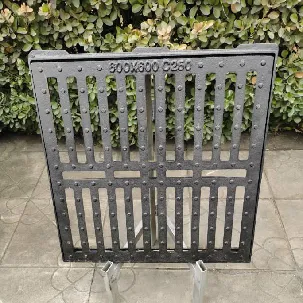butterfly valve air actuator
Butterfly Valve Air Actuator An Overview
When it comes to fluid control systems, the butterfly valve is a preferred choice due to its simplicity, efficiency, and versatility. This type of valve operates using a rotating disc that toggles between open and closed positions, allowing for the regulation of flow in pipelines. One of the essential components that enhance the functionality of a butterfly valve is the air actuator, which plays a critical role in automating the valve's operation.
Understanding Butterfly Valves
Butterfly valves are characterized by their unique design, which consists of a disc mounted on a rotating shaft. Acting as a flow control device, the disc is positioned in the center of the pipe, and by turning the shaft, the disc can be rotated either parallel or perpendicular to the flow of the fluid. This action allows for precise control of the flow rate, making butterfly valves an excellent choice for various applications, including water supply, waste management, and industrial processes.
The advantages of butterfly valves include their compact size, lightweight construction, and low cost compared to other types of valves. They can handle a wide range of pressures and temperatures, making them suitable for both gas and liquid applications. However, to fully realize the potential of a butterfly valve, integrating it with an actuator is vital.
The Role of Air Actuators
Air actuators utilize compressed air to automate the opening and closing of butterfly valves. This automation enables remote control operations, which can significantly improve efficiency and safety in industrial settings. Air actuators are often more advantageous than their electric counterparts, particularly in environments where explosive hazards may exist. Since they do not require an electrical power source, they minimize risks while ensuring reliable valve operation.
In general, air actuators can be classified into two types single-acting and double-acting
.1. Single-Acting Air Actuators These actuators use compressed air to perform a single function, either opening or closing the valve. A spring mechanism typically assists in returning the valve to its fail-safe position when the air pressure is released. This type of actuator is effective in applications where the valve needs to remain closed during an emergency or power failure.
butterfly valve air actuator

2. Double-Acting Air Actuators In contrast, double-acting actuators utilize compressed air for both opening and closing the valve. This provides enhanced control and response time, making them suitable for critical processes where precise flow regulation is essential.
Benefits of Integrating Air Actuators with Butterfly Valves
The combination of butterfly valves and air actuators results in numerous benefits that enhance the overall system performance
- Quick Response Time Air actuators are known for their rapid action, enabling immediate valve adjustments based on system demands. This agility is crucial in dynamic environments where fluid flow patterns can change unexpectedly. - Ease of Maintenance Air actuators require minimal maintenance compared to mechanical systems. With fewer moving parts, they are less prone to wear and tear, translating to lower operational costs over time.
- Over Pressure Protection Many air actuators incorporate safety features that automatically close the valve under certain conditions, preventing excess pressure buildup and potential system failures.
- Versatility These actuators can be used across various industries, including water treatment, oil and gas, food and beverage, and pharmaceuticals. Their adaptability allows them to meet specific application requirements, such as varying temperature and pressure conditions.
Conclusion
The butterfly valve air actuator system epitomizes the union of efficiency and automation in fluid control applications. With the capacity to enhance responsiveness and reliability while minimizing risks, this solution is a favorite among engineers and operators alike. As industries continue to embrace automation, the role of air actuators in conjunction with butterfly valves is set to grow, paving the way for innovative solutions in fluid management and control systems.
-
The Essential Component for Safe Urban InfrastructureNewsMay.14,2025
-
The Backbone of Urban InfrastructureNewsMay.14,2025
-
Practical and Stylish Solutions for Your Drainage NeedsNewsMay.14,2025
-
Lamphole Frame and Cover: Essential for Urban InfrastructureNewsMay.14,2025
-
A Seamless and Aesthetic SolutionNewsMay.14,2025
-
A Must-Have for Safety and DurabilityNewsMay.14,2025
-
Pipe Repair Clamps: Your Ultimate Solution for Efficient RepairsNewsMay.09,2025
